Memorial Day 2018.
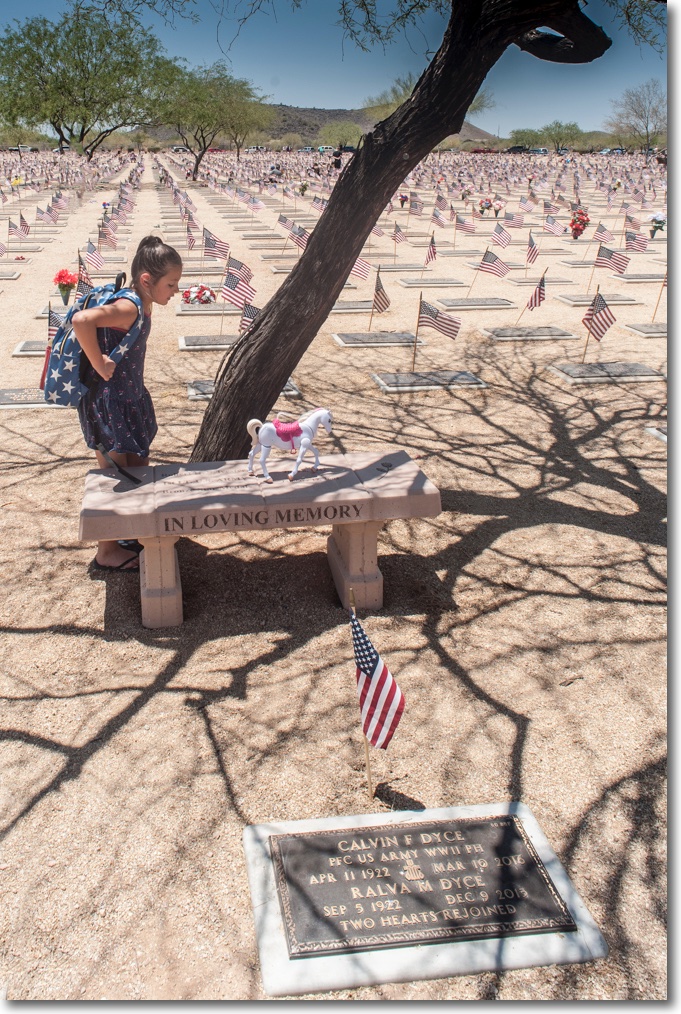
Nikon D3x, 20mm UD Nikkor, ISO200. My lens correction profile was used in Lightroom to eliminate modest barrel distortion and vignetting displayed by this otherwise superb optic.
Memorial Day 2018.

Nikon D3x, 20mm UD Nikkor, ISO200. My lens correction profile was used in Lightroom to eliminate modest barrel distortion and vignetting displayed by this otherwise superb optic.
In the high desert.
The National Memorial Cemetery of Arizona is located on a vast piece of desert land in Cave Creek, northeast of Scottsdale where I live. The fallow space leaves lots of room for future generations of murderous politicians to send innocent men and women to an early grave. As usual, I try to visit a National Cemetery on Memorial Day and as this one is near my home, convenience was an added plus.

Dedication.
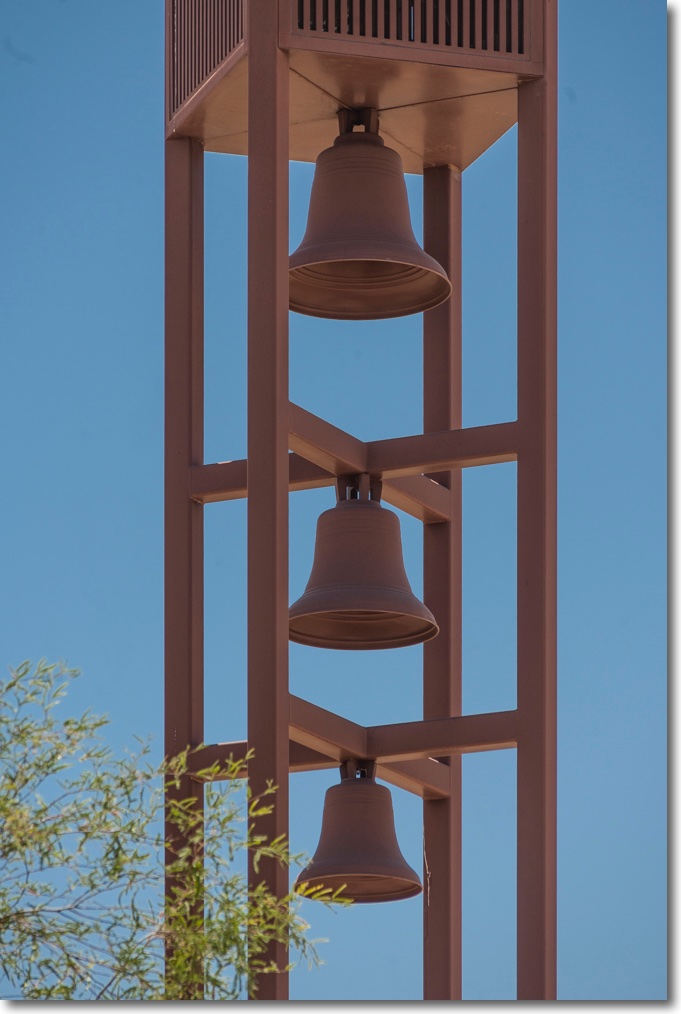
Austere memorial.

Grave Locator.
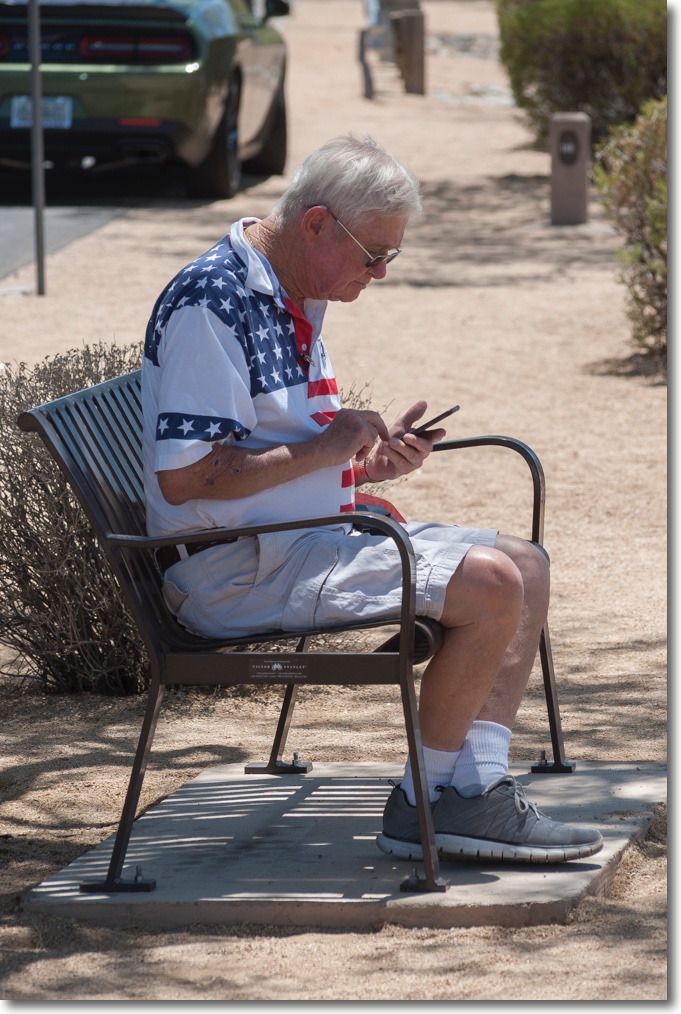
True colors.

In the Columbarium – where ashes are stored.

The Columbarium.

Saguaro cemetery.
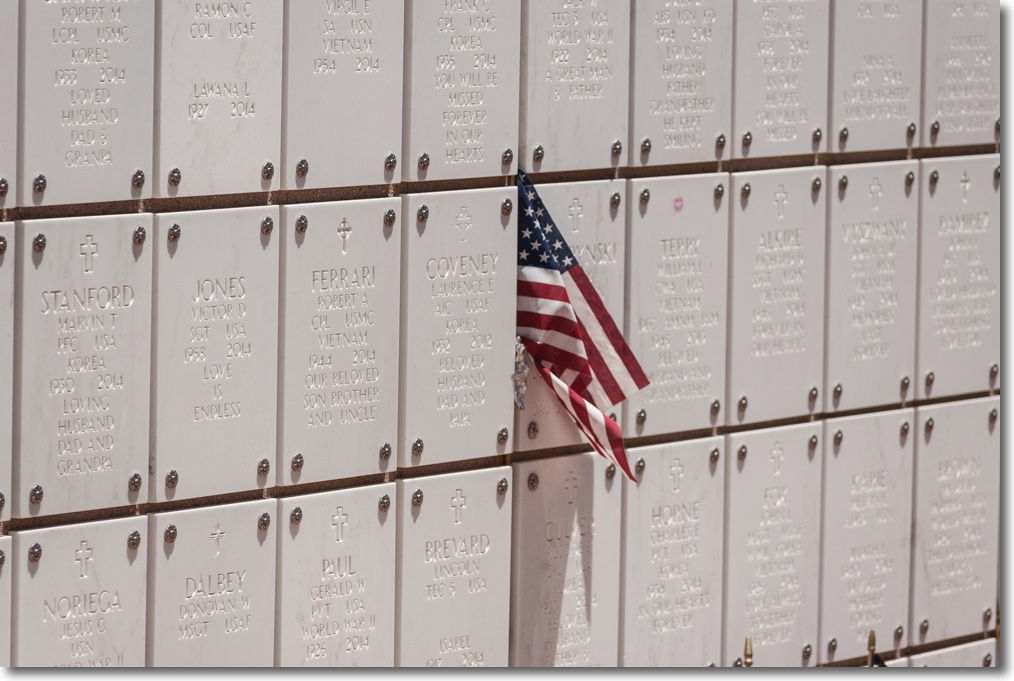
Lone flag.
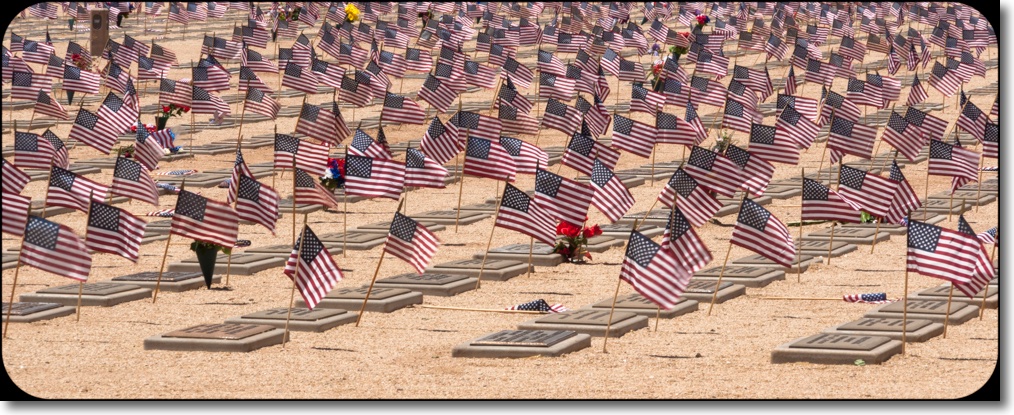
Moving display.
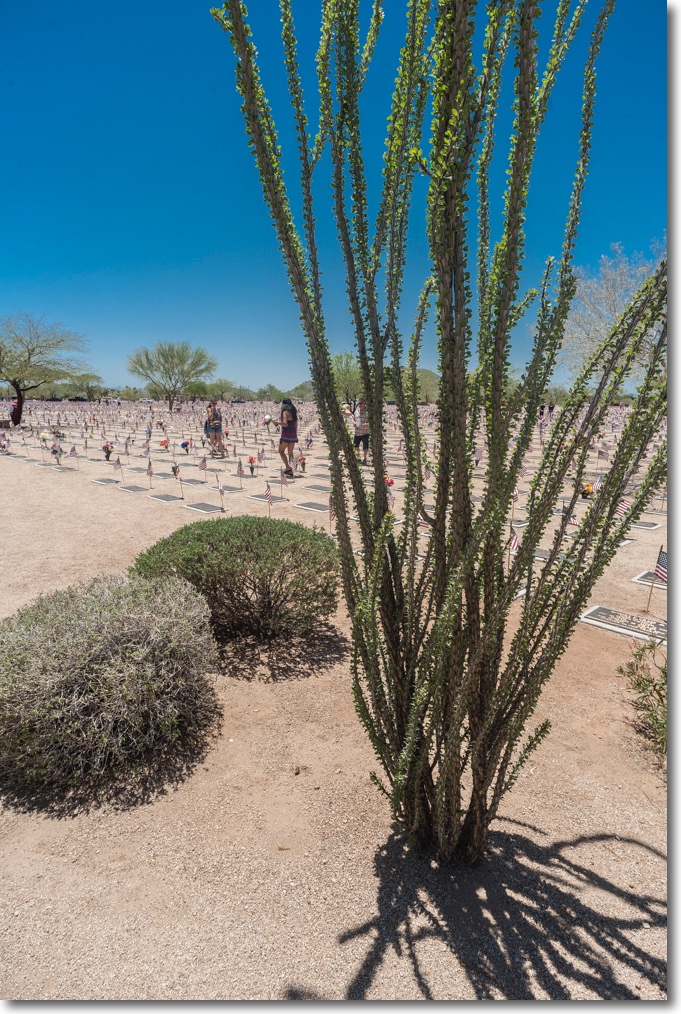
Ocotillo.

Memorial Day.
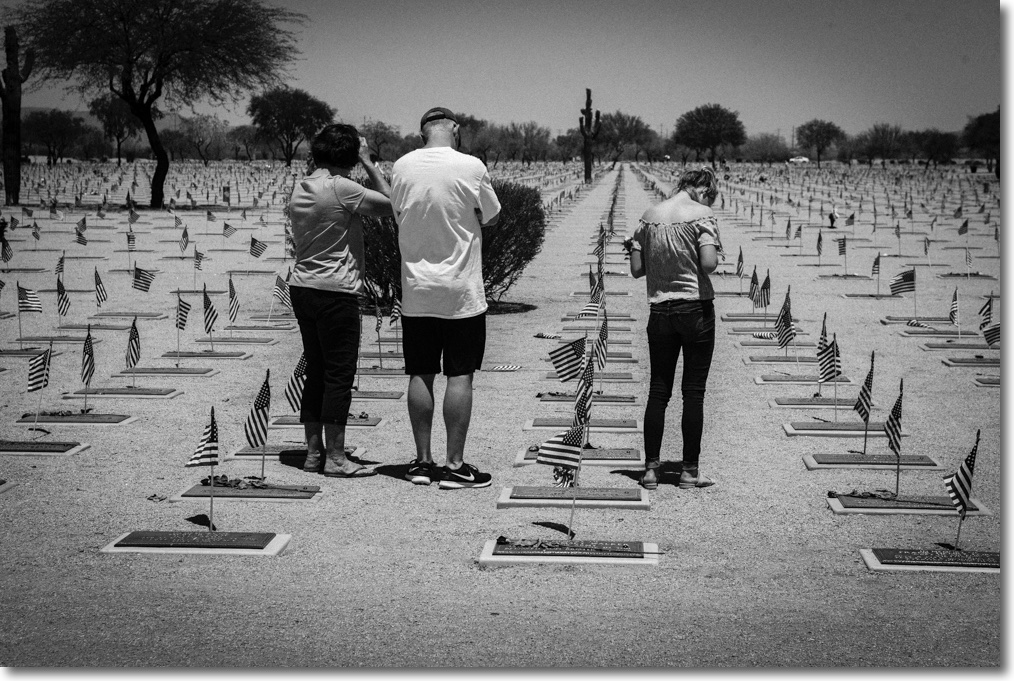
Mourning.

Never forget.

USAF.

Under the hot Arizona sun.
On this occasion the hardware consisted of the Nikon D3x along with the ancient but superb 20mm UD Nikkor, the 35-70mm AFD Nikkor and the 200mm Nikkor-Q which, I swear, will not allow you to make a bad picture. The 20mm and 200mm were AI’d and chipped by me to allow recording of EXIF data, which I find key for image search and retrieval. The AFD is factory Ai’d and chipped. All pretty much straight out of camera with the exception of #10 (warmth added, cropped), #13 (monochrome conversion), #15 and #16 (LR cold tone preset plus highlight reduction). ISO200 throughout with #10 being the best of ten at 1/60th and f/32 for maximum DOF. I’m getting less steady with age!
With the grain master.
This journal seems to have hit a bit of a film streak recently, so here’s more of the same.
In the 1970s, the height of the 35mm film era, Ansco made a film named GAF500 which was a color slide film rated at a nominal 500 ASA. Given that most slide snappers were using Kodachrome II (25 ASA) or Kodachrome X (64 ASA) at the time, this was quite a statement.
The film’s fame owes much to the work of French photographer Sarah Moon who jumped on its creative possibilities which perfectly matched her impressionist – nay, pointillist – photography style. Pointillisme was originated by that most special of French painters George Seurat in the 1880s. Dots of color replaced continuous tones and the results were electric. Maybe his finest work is ‘A Sunday Afternoon on the Island of La Grande Jatte’ from 1884 and you have zero excuses for not seeing it for it resides in all its magnificence in The Art Institute of Chicago.
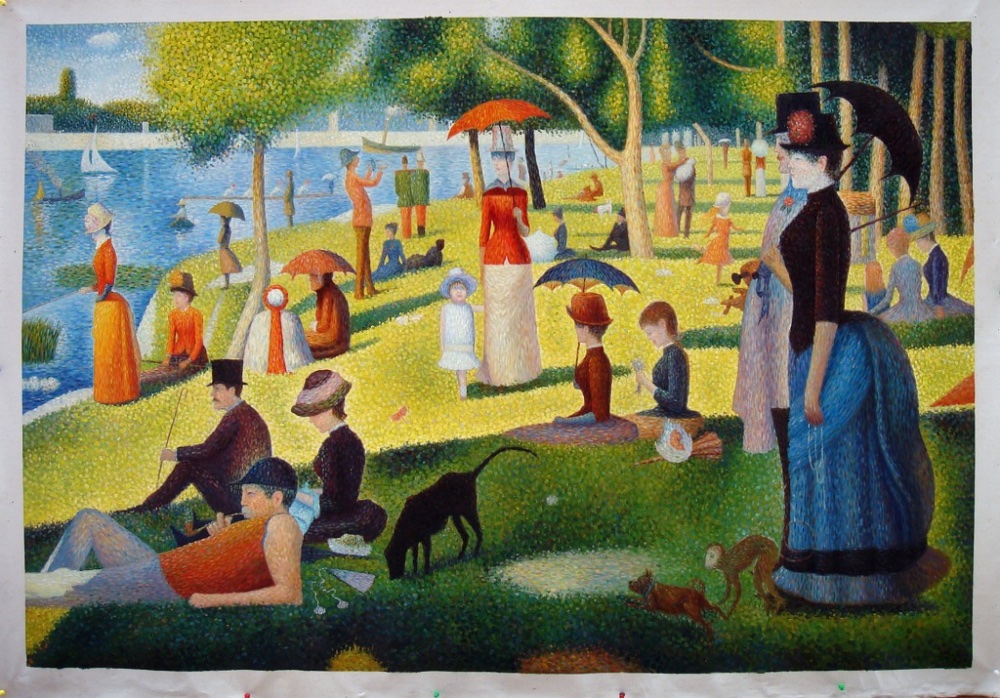
At this time in my life I had already long decided to abandon dreary, failed England, where I had grown up and graduated in 1973 from University College, London, and had my eyes firmly set on the New World and America, a reality that came to closure in late 1977. But having been an ardent Francophile for the past 15 of my 26 years on earth, a visit to Paris was first called for. I had already devoured Proust’s magnum opus ‘Remembrance of Things Past’ not once but twice, had enjoyed a passionate affair with Impressionist painting, based on my readings of John Rewald’s magnificent books, and had maybe two hundred of Henri Cartier-Bresson’s images committed to memory.
What causes this flashback is not any great love of tea or madeleines (I dislike the first and rarely eat the second) but rather my son’s trip tomorrow to Paris with his school as part of his French studies. He will stay ’embedded’ with a French family – no English allowed! – for two weeks, half in Strasbourg, Alsace on the German border, the other half in Paris. Strasbourg with its overweening Germanic culture leaves me cold, but Paris ….
Returning to the Divine Sarah, I packed one roll of GAF500 on my trip in 1976, much inspired by her work. The rest was all TriX which is about all I used back then. Why mess with perfection? The greatest monochrome emulsion ever made. I doubt I had taken more than a handful of color snaps in my life a that point, but I did find GAF500 in my Leica on the obligatory trip up the Eiffel Tower and one of the snaps made there came out rather nicely, the essence of all that is French, looking into the fine restaurant atop the Tower.

So the next three weeks I will be living vicariously through my boy, Winston, whose namesake WSC was once asked how he managed to tolerate DeGaulle’s endless grandstanding in London during WW2. “He is my cross of Lorraine to bear”, WSC replied. Expounding on his theme, he added that a world without French culture, cuisine, couture and women would be a far worse place. Churchill wisely chose the south of France for his retirement, abandoning drafty, cold, rainy Chartwell to the tourist hordes. Here’s more of the same:

That week I spent in Paris was magical and I do not recall taking one bad image. This trio from the Tuileries Gardens about sums it up:

May Winston have as good a time.
Vive La France!
Farming town, CA.
For an index of all my Film related articles, click here.
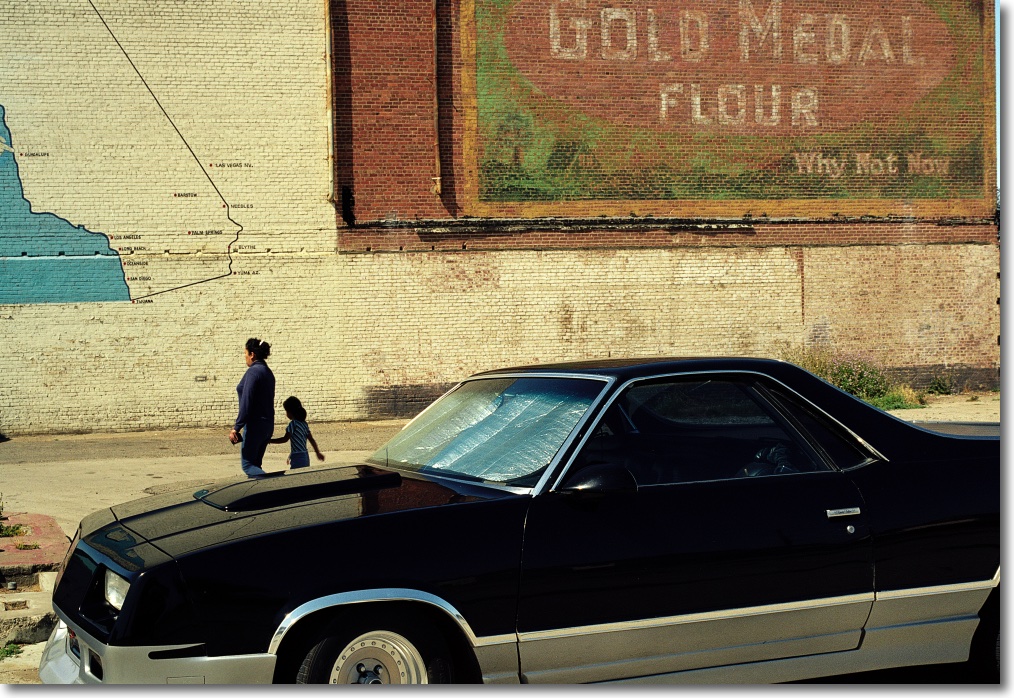
Graflex Crown Graphic 4×5, 135mm Xenar, Kodak VC160 film
Site of the OK Corral.
For an index of all my Film related articles, click here.

Snapped in 1995. My relationship with – and love of – Arizona goes back decades.
Leica M2, 35mm Summicron. Kodachrome 64.